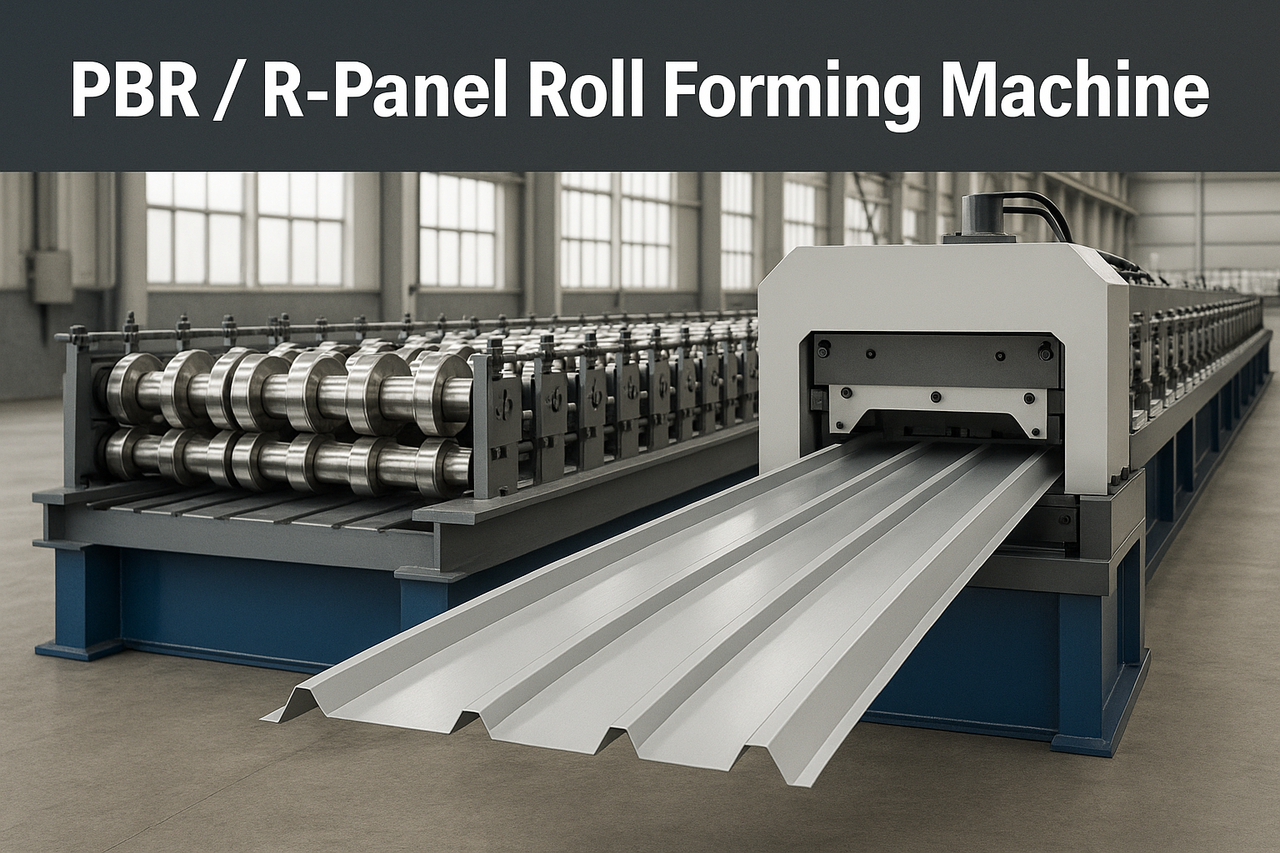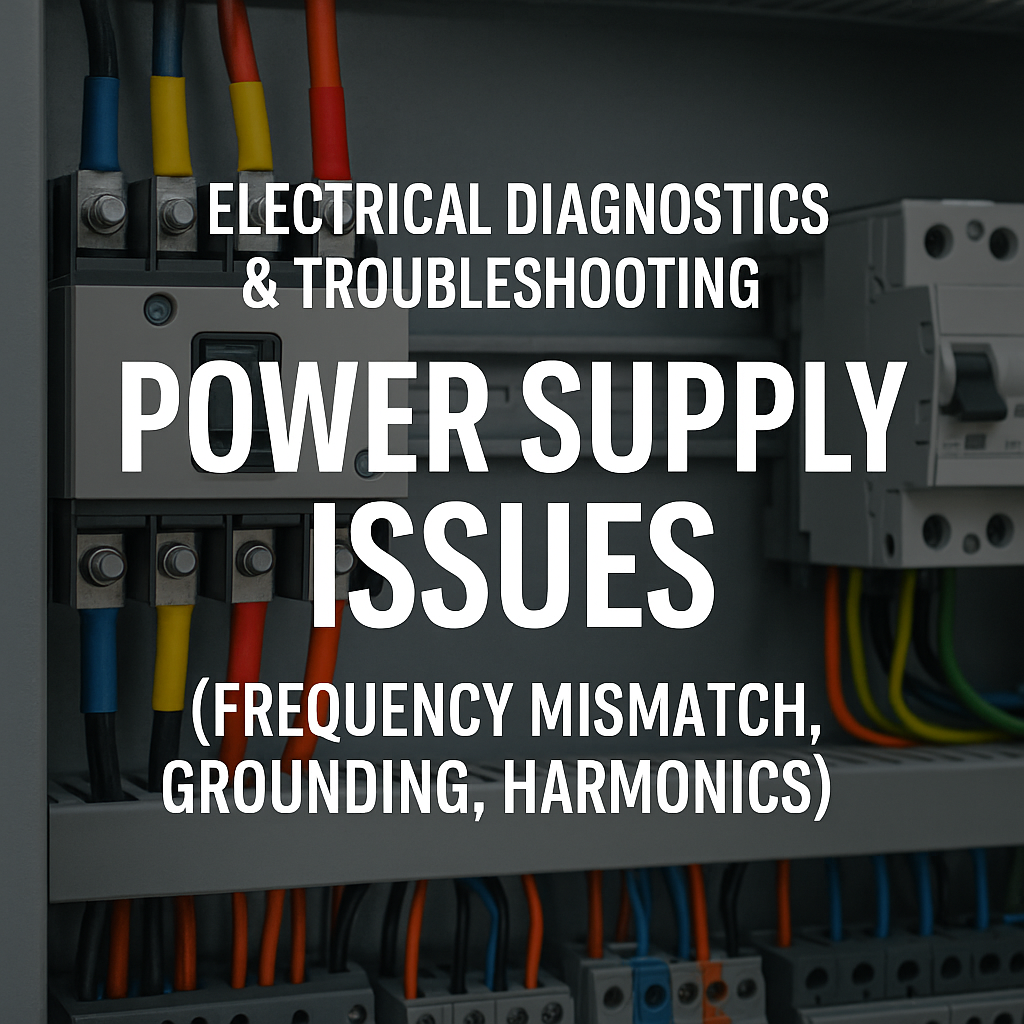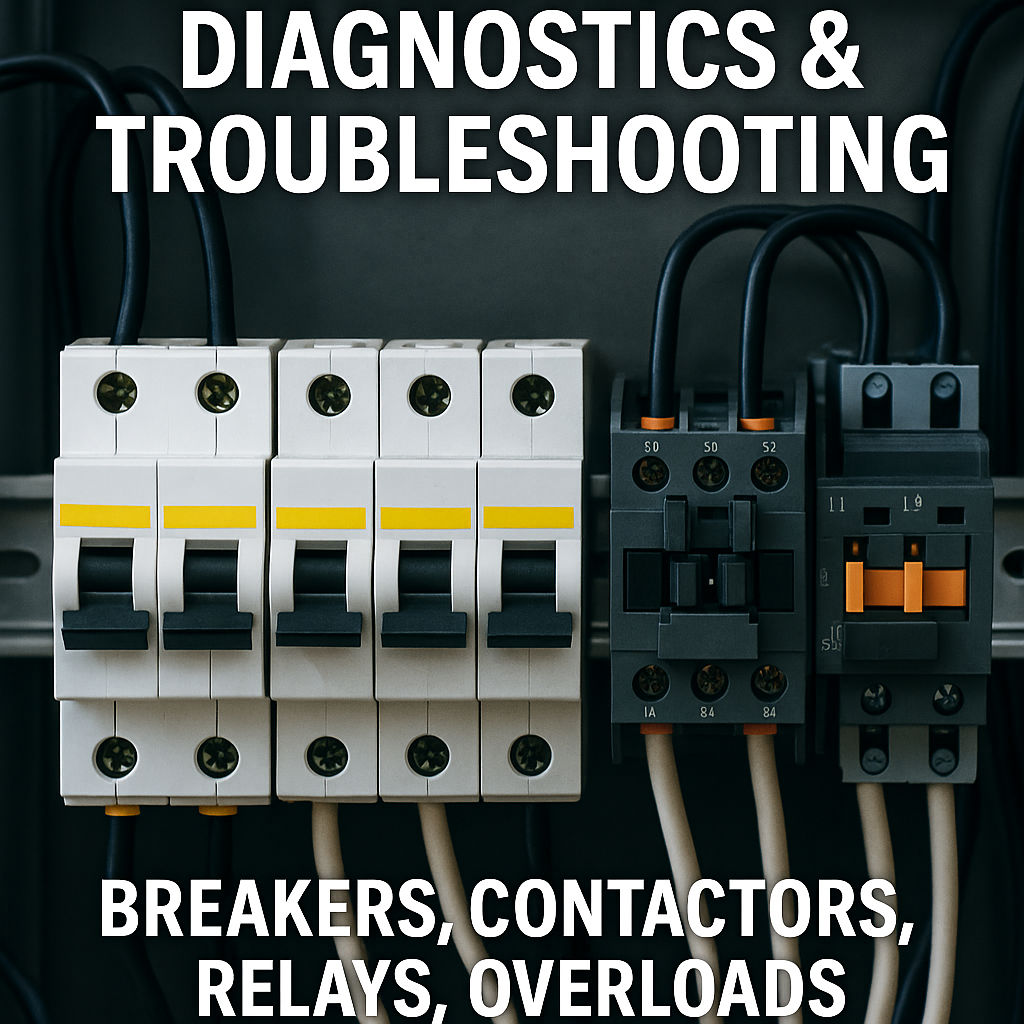
Posted on Sunday, November 16, 2025
The PBR / R-Panel roll forming machine is one of the most widely used roofing and cladding production systems in North America, the Middle East, and emerging construction markets worldwide. Known for its strength, versatility, and broad application across industrial, commercial, agricultural, and residential sectors, the PBR (Purlin Bearing Rib) or R-Panel profile remains a market staple for steel building systems.
This complete guide covers everything a buyer, contractor, or factory owner needs to know before purchasing a PBR roll forming machine—from technical specifications and profile geometry to global usage, materials, power requirements, pricing, and installation. All machines supplied through Machine Matcher are built new, custom-configured, and delivered worldwide, with full support from our technical teams in the UK and USA.
A PBR / R-Panel roll forming machine is a fully automated production line designed to transform flat steel coil into a 36-inch metal panel with deep ribs and a bearing leg that sits over purlins. The classic PBR panel includes:
Three major ribs
Two minor ribs between each major rib
A purlin-bearing rib at one side for easier installation
Coverage width typically 36–38 inches
Rib height usually 1.00–1.25 inches
These machines are essential for building envelope systems due to the profile’s high structural strength and ability to span long distances with minimal support.
The machine feeds coil through a sequence of precisely machined rollers, gradually forming the rib shape without damaging the coating. A hydraulic or flying shear then cuts panels to length, controlled by an encoder and programmable PLC.
| Specification | Details |
|---|---|
| Machine_ID | MM-RPBR-001 |
| Machine_Family | Roofing Panel Roll Forming Line |
| Machine_Type | PBR / R-Panel Roll Forming Machine |
| Alternate_Names | R-Panel Machine, PBR Roofing Machine, 36” Roofing Panel Machine |
| Region_Popularity | USA, Canada, Mexico, Brazil, UAE, Saudi Arabia, Australia, South Africa |
| Common_Profiles_Produced | 36” PBR, 36” R-Panel, deep rib R-panel, reverse R-panel |
| Gauge_Range_mm | 0.30–0.80 mm (29–22 gauge) |
| Material_Types | GI, GL, PPGI, PPGL, Aluminum |
| Tensile_Range_MPa | 235–550 MPa |
| Production_Speed_mpm | 12–45 m/min |
| Roller_Stations | 16–24 stations |
| Roller_Material | GCr15 / 45# Steel (heat-treated & chrome-plated) |
| Shaft_Material | 40Cr hardened shafts (60–75 mm) |
| Cutting_Type | Hydraulic guillotine (standard), Flying shear optional |
| Punching_Type | Hydraulic or servo punching (optional) |
| Power_Supply | 380V–415V 50Hz / 230–480V 60Hz |
| Motor_Power_kW | 7.5–15 kW |
| Hydraulic_Power_kW | 4–7.5 kW |
| Control_System | Siemens / Mitsubishi / Delta PLC & HMI |
| Automation_Level | Fully automatic |
| Line_Configuration | Decoiler → Feeder → Forming → Cutting → Table |
| Coil_Width_Range_mm | 914–1220 mm |
| Coil_Thickness_Range | 0.30–0.80 mm |
| Accessories_Included | 3–5 ton decoiler, run-out table, spare blades |
| Optional_Extras | Coil car, hydraulic decoiler, flying shear, stacker, remote PLC, embossing |
| Typical_Applications | Roofing, wall cladding, barns, warehouses, sheds |
| Industries | Construction, steel buildings, agriculture, warehousing |
| Common_Countries | USA, Canada, Mexico, UAE, South Africa, Brazil, Australia |
| Price_Range_USD | $38,000 – $160,000 |
| SEO_Keywords | PBR machine, R-panel roll former, metal roofing machine |
| SEO_Tags | metal roofing, roll forming, steel panel |
| Notes | High demand in USA & Gulf region; profile variations exist |
4. PBR / R-Panel Profile Overview
The PBR profile is a heavy-duty metal panel used for both roofing and siding. It offers superior load-bearing performance due to its deep ribs, consistent geometry, and purlin-bearing leg.
Coverage width: 36 inches (914 mm)
Rib height: 1.00–1.25 inches
Major rib spacing: 12 inches
Material thickness: 29–22 gauge
Materials: GI, GL, PPGI, PPGL, Aluminum
Strong, rigid, high-spanning capability
Works for low, medium, and high roof pitches
Excellent durability in harsh climates
Compatible with insulation systems
Easy installation due to the bearing leg
Texas deep-rib PBR
Gulf-region box rib
Reverse R-panel for wall siding
PBR with vented or punched ribs
The machine transforms coil into panels using these stages:
The coil is loaded onto a manual or hydraulic decoiler. Tension is controlled to avoid coating scratches.
A pinch or servo feeder aligns the strip before forming.
16–24 stations progressively shape the ribs:
Minor ribs
Major ribs
Bearing leg
Side lock (if included)
Tooling is hardened and polished to prevent damage to painted or galvanized surfaces.
Encoder monitors the strip and sends signals to the PLC for precise lengths.
Hydraulic or flying shear cuts panels at programmed lengths without deforming the profile.
Finished panels exit onto a run-out table or automatic stacker.
The PBR panel is used in:
Industrial warehouses, factories, farm buildings, and storage centers.
Commercial buildings, retail units, workshops, garages.
Barns, sheds, feed storage, horse arenas.
Carports, porches, siding, fencing panels.
Construction
Steel building manufacturers
Agricultural building suppliers
Oil & gas service centers
Warehousing and logistics
DIY metal building suppliers
Pre-engineered steel buildings
The world’s most dominant PBR region. Used in roofing, wall systems, barns, and steel buildings.
Popular due to strength in hot climates and strong wind load resistance.
Demand increasing due to affordability and robustness.
Heavy use for industrial and agricultural construction.
Used in wide-span structures and metal sheds.
$38,000 – $85,000
(Manual decoiler, hydraulic cutter, 12–18 m/min speed)
$85,000 – $120,000
(Automatic decoiler, improved speed, chrome-coated rollers)
$120,000 – $160,000
(Flying shear, servo feeder, automatic stacker, 40+ m/min)
Shipping & logistics
Import duties
Installation & commissioning
Profile tooling customization
Spare parts & consumables
Hydraulic decoiler (3–10 tons)
Coil car automatic loading
Scrap shear
Flying shear system
Automatic panel stacker
Embossing rollers
Remote PLC (Ewon, Siemens)
Safety guard enclosure
Auto-lubrication system
18–24 meters space
380–480V 3-phase
Flat concrete floor
Overhead crane or forklift for coils
Install the line
Align roller stations
Test electrical & hydraulic connections
Run initial coil
Fine-tune profile forming
Production ramp-up
Daily:
Clean rollers
Check hydraulic levels
Inspect encoder sensor
Weekly:
Lubricate chains & bearings
Check gearbox oil
Inspect cut blades
Monthly:
Tighten bolts
Flush hydraulic tank (if required)
Backup PLC program
36 inches coverage.
GI, GL, PPGI, PPGL, aluminum.
26–29 gauge for roofing, 24–22 gauge for structural walls.
Siemens, Mitsubishi, Delta.
230V–460V, 60Hz, 3-phase.
12–45 m/min depending on configuration.
Yes, with alternate tooling.
Yes, hydraulic or servo punching can be integrated.
Yes—worldwide installation and training.
No—all tooling is polished and hardened.
Yes, reverse R-panel is common for walls.
8–12 years depending on material and maintenance.
Yes, Machine Matcher can design any profile.
Typically $150–$300.
Yes—24/7 remote PLC and electrical support is available.
Machine Matcher supplies brand-new roll forming machines engineered to your exact specification.
We offer:
Custom profiles
Worldwide delivery
Installation and training
24/7 remote technical support
Electrical diagnostics
Profile design assistance
Spare parts
PLC programming help
Contact Machine Matcher
United Kingdom (Main Office)
Phone: +44 20 335 56554
United States
Phone: +1 407 559 7948
Mobile / WhatsApp: +44 7816 972935
Email: [email protected]

32/1000 Box Profile Roll Forming Machine – Complete Guide & Specifications
Posted on Sunday, November 16, 2025
High-performance 32/1000 box profile roll forming machine for roofing and cladding. Full specifications, profiles, applications, pricing

Posted on Sunday, November 16, 2025
How to Diagnose and Fix the Hidden Electrical Problems That Cause Downtime

Posted on Sunday, November 16, 2025
How to Diagnose Power Circuit Failures That Shut Down Production
Copyright 2025 © Machine Matcher.